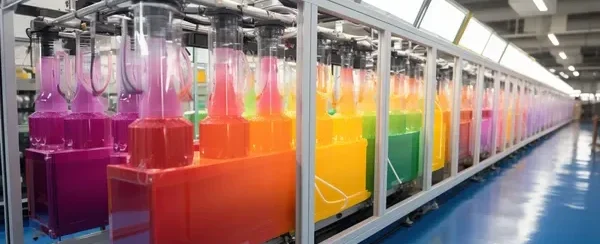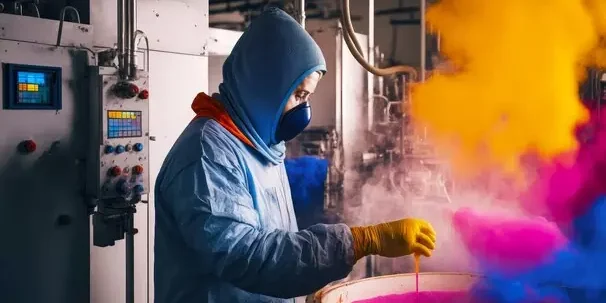How to Store and Handle Industrial Chemicals Safely
Home / Single Post
In industrial settings, the safe storage and handling of chemicals are critical to maintaining a secure work environment and ensuring the well-being of employees. Chemical accidents can lead to severe health risks, environmental damage, and significant financial losses. Proper management practices are not only essential for compliance with safety regulations but also for preventing accidents and ensuring operational efficiency. This blog post provides a comprehensive guide on how to store and handle industrial chemicals safely, emphasizing practical advice and regulatory compliance.
Understanding Chemical Safety
Before delving into specific storage and handling practices, it’s essential to understand the basic principles of chemical safety. Industrial chemicals vary widely in their properties, including their flammability, toxicity, reactivity, and environmental impact. Effective safety management begins with recognizing these characteristics and implementing appropriate measures.
1. Chemical Risk Assessment
Conducting a thorough risk assessment is the first step in ensuring chemical safety. This involves:
- Identifying Chemicals: List all chemicals used or stored in the facility.
- Evaluating Hazards: Determine the potential risks associated with each chemical, such as health effects, fire hazards, or environmental impact.
- Assessing Exposure: Evaluate how employees might come into contact with chemicals and the potential consequences of exposure.
- Implementing Controls: Develop and implement safety controls and procedures based on the risk assessment findings.
Safe Storage Practices
Proper storage of industrial chemicals is crucial for preventing accidents and ensuring long-term safety. Here are key considerations and best practices:
1. Storage Location
- Designated Areas: Store chemicals in designated areas that are specifically designed for their safe storage. These areas should be well-ventilated, clean, and equipped with necessary safety features.
- Avoid Public Access: Ensure that storage areas are restricted to authorized personnel only.
2. Labeling and Documentation
- Clear Labeling: All chemicals must be clearly labeled with their name, hazards, and handling instructions. Labels should be legible and include the chemical’s Safety Data Sheet (SDS) information.
- Inventory Management: Maintain an up-to-date inventory of all chemicals, including their quantities and locations. This helps in tracking usage and ensuring proper stock levels.
3. Temperature and Environmental Control
- Temperature Regulation: Store chemicals at the recommended temperature to prevent degradation or dangerous reactions. Some chemicals may require refrigeration, while others need to be kept at room temperature.
- Humidity Control: Control humidity levels where necessary to prevent chemical reactions or spoilage.
4. Containment and Spill Prevention
- Secondary Containment: Use secondary containment systems, such as trays or bunds, to catch spills or leaks and prevent contamination.
- Spill Kits: Keep spill kits readily available in storage areas. These kits should include absorbents, neutralizers, and personal protective equipment (PPE).
5. Separation of Chemicals
- Incompatible Chemicals: Store incompatible chemicals separately to prevent dangerous reactions. For example, acids should be stored away from bases, and flammable materials should be kept apart from oxidizers.
- Secure Containers: Ensure that all chemicals are stored in appropriate containers that are securely closed and resistant to leakage.
Safe Handling Practices
Proper handling of chemicals is equally important for maintaining safety. Follow these guidelines to ensure safe practices:
1. Personal Protective Equipment (PPE)
- Appropriate PPE: Wear the required PPE, including gloves, goggles, face shields, and lab coats, based on the type of chemical and the level of exposure risk.
- Regular Inspection: Inspect PPE regularly for damage and replace it as needed.
2. Handling Procedures
- Training: Provide comprehensive training for employees on safe handling procedures, including how to use PPE, handle spills, and follow emergency protocols.
- Proper Techniques: Use appropriate techniques for transferring chemicals, such as using pumps or funnels, to minimize spills and exposure.
3. Emergency Preparedness
- Emergency Procedures: Develop and communicate emergency procedures for chemical spills, leaks, or exposures. Ensure that all employees are familiar with these procedures.
- First Aid: Have first aid kits available and ensure that employees are trained in basic first aid for chemical exposures.
4. Equipment and Tools
- Compatible Tools: Use tools and equipment that are compatible with the chemicals being handled. Avoid using metal tools with reactive chemicals, and use materials that are resistant to chemical degradation.
- Maintenance: Regularly maintain and inspect equipment to ensure it is in good working condition.
5. Safe Disposal
- Disposal Procedures: Follow proper disposal procedures for chemicals, including the use of licensed disposal contractors if necessary. Avoid disposing of chemicals in regular trash or drains.
- Labeling Waste: Clearly label waste containers with the type of chemical and associated hazards.
Regulatory Compliance
Compliance with safety regulations is a fundamental aspect of chemical management. Various regulations and standards apply to the storage and handling of industrial chemicals, including:
1. OSHA Regulations
- Hazard Communication Standard (HCS): Requires labeling of chemicals, availability of Safety Data Sheets (SDS), and employee training on chemical hazards.
- Process Safety Management (PSM): Applies to facilities with highly hazardous chemicals, requiring detailed safety management programs.
2. EPA Regulations
- Resource Conservation and Recovery Act (RCRA): Governs the management and disposal of hazardous waste.
- Emergency Planning and Community Right-to-Know Act (EPCRA): Requires reporting of chemical inventories and releases to local authorities.
3. Local and State Regulations
- State Safety Regulations: In addition to federal regulations, many states have their own regulations for chemical storage and handling.
- Local Fire Codes: Local fire codes may include specific requirements for the storage of flammable and hazardous materials.
Best Practices for Safety Management
To further enhance safety in chemical storage and handling, consider implementing these best practices:
1. Regular Audits and Inspections
- Safety Audits: Conduct regular safety audits to assess compliance with safety procedures and identify potential hazards.
- Inspections: Perform routine inspections of storage areas, equipment, and PPE to ensure that everything is in good condition.
2. Continuous Training and Education
- Ongoing Training: Provide continuous training for employees on the latest safety practices, regulations, and emergency procedures.
- Updates: Keep employees informed about any changes in regulations or safety protocols.
3. Safety Culture
- Encourage Reporting: Foster a safety culture where employees feel comfortable reporting potential hazards or unsafe practices without fear of retaliation.
- Promote Awareness: Regularly reinforce the importance of safety and ensure that it is a core value within the organization.
Conclusion
The safe storage and handling of industrial chemicals are essential for maintaining a secure and efficient work environment. By implementing proper storage practices, adhering to safe handling procedures, and ensuring regulatory compliance, organizations can minimize risks and protect both their employees and the environment.
Understanding the properties of chemicals, adhering to safety regulations, and fostering a culture of safety are key to successful chemical management. By following these guidelines and best practices, industries can effectively manage chemical risks, prevent accidents, and ensure the long-term safety and success of their operations.
Incorporating these practices into your daily operations not only helps in compliance with safety regulations but also contributes to a safer, more productive workplace. Investing in safety is an investment in the well-being of your employees and the overall success of your organization.









